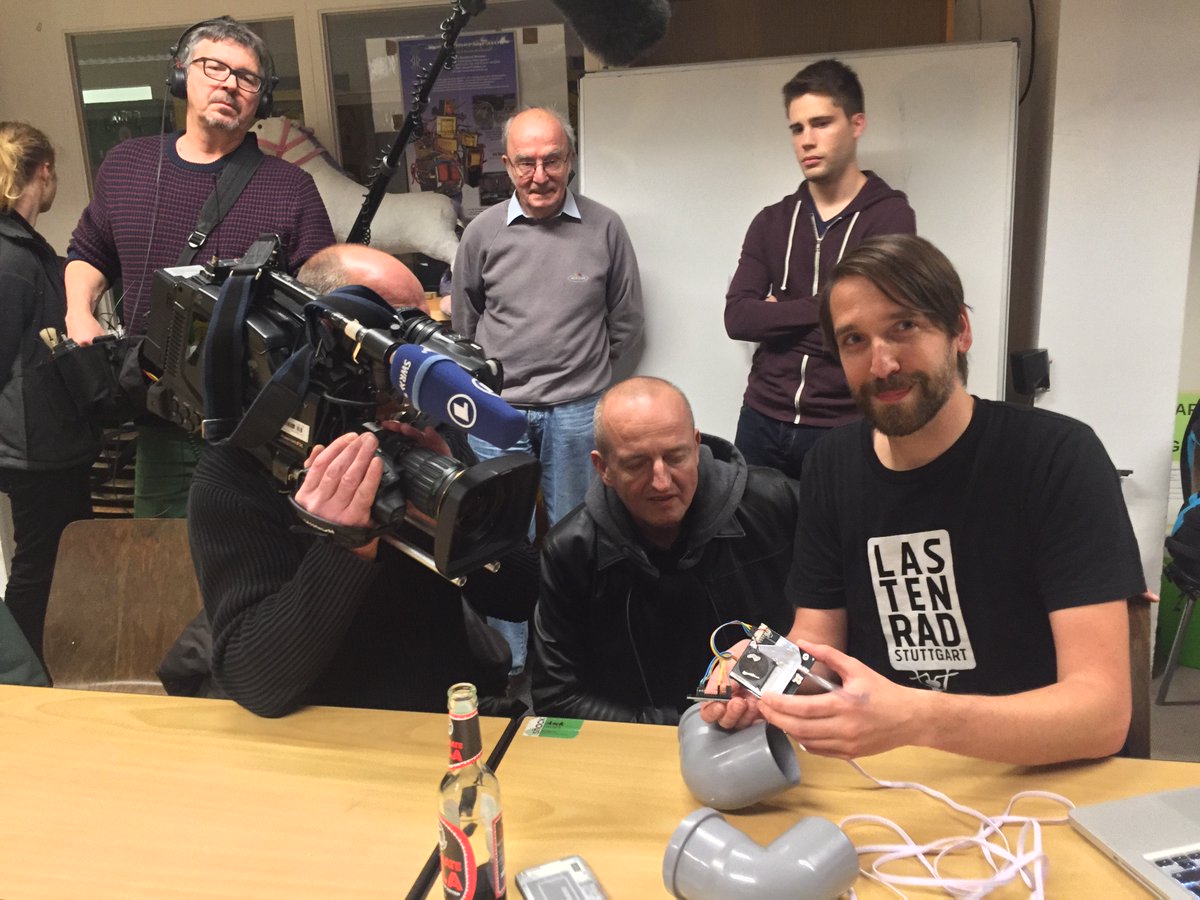
Thick air
In Stuttgart the warning for high concentrations of particulate matter in the air is triggered on a regular basis. Its geographic location and particularly high number of cars are responsible for the fact that the European limits for air pollution are exceeded with alarming frequency.
Particulate matter – these are fine particles in the air which, due to their tiny mass, do not immediately sink to the ground. The particles usually come from motor vehicles, heating plants and agriculture. Once inhaled, they can penetrate into the bronchi and pulmonary vesicles, causing irritation and inflammation in the respiratory tract. When they enter the bloodstream, they also lead to other complications such as thrombosis, Alzheimer’s, and generally decreased life expectancy. Thus, they constitute a serious health problem in urban areas.
The topic has dominated municipal politics for years. This is how Jan Lutz and David Lackovic, members of the OK Lab Stuttgart, were drawn to the subject.
The right device
Despite the precarious situation, there are only few measuring stations from the State Agency for the Environment, Measurements and Nature Conservation Baden-Württemberg (LUBW) and the Office for Environmental Protection. The most famous one is located at the Neckartor, where more than 80,000 cars pass through daily.
That’s not good enough for the OK Lab. They set themselves the goal of collecting more data on particulate matter. This is done by a network of self-made sensors around the entire region. The measured particulate matter values are displayed in real time over the Internet. The goal is not only to improve the data, but also to create more transparency in data collection.
The idea is great, but creativity is required in its implementation. The devices should not only be easy to install; they should also be relatively inexpensive to make.
The OK Lab in Stuttgart has been able to achieve better results over a period of two years – first with a sensor from a Japanese air-conditioning system, then with a particulate matter sensor, which measures “PM2,5” as the international standard alongside “PM10”. Fortunately, the sensors are so low-cost that they fit into the budget of around 30 Euros per device.
And do these low-cost sensors work? Yes. The measured values have an almost identical curve profile compared to a professional instrument. And due to the high quantity of devices the result is empirically sound. The readings are so accurate that you can easily see when the rush hours of the day are. Their scientific expertise is also in the team: Ewald Thoma was a long-standing meteologist at the city.
The team can now do both – quantity and quality.
Große Resonanz
A good idea soon turned into a movement. Citizens’ initiatives such as the BI Neckartor or the Reallabor für nachhaltige Mobilitätsskultur have joined forces to draw attention to the problem.
No one likes to talk about the ugly topic of particulate matter. We just turned it around and found that there are also nice perspectives on it such as data visualization, open data and citizen science.
But not just organizations are thrilled. Suddenly, the lab is receiving tons of emails and inquiries: everybody wants a sensor. More than 300 devices have already been made possible through donations. As soon as they are put together – which takes about 20 minutes per device – they can immediately go online.
The project is far more than an environmental project. The network of particulate sensor makers is unique in Germany. The Lab is a meeting place for people who want to exchange ideas about urban development, open data, the internet of things and citizen science. Data journalists are also interested in the topic: the local newspaper will soon have an API and can integrate the data on their webpage. This is how particulate matter becomes a political matter.
For the next year, the Stuttgarters would like a closer cooperation with the city and the country. And an even bigger network – so that data from entire regions can be compared.
The official launch of the live network is the international Open Data Day on 4 March 2017.